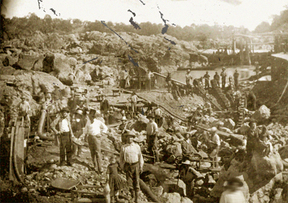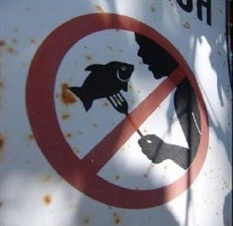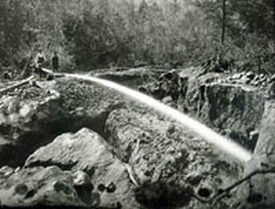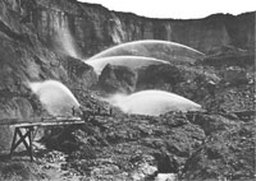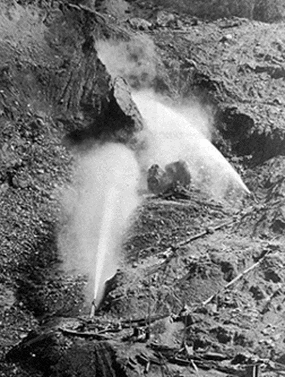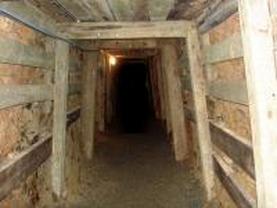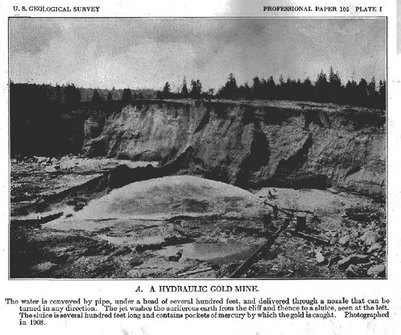Enviromental Impacts
The California Gold Rush may have helped the United States of America prosper in terms of wealth and power, but it held a huge toll on California's enviroment.
The California Gold Rush left behind toxic materials that threatened California's water, even today. During the Gold Rush, miners used mercury to extract gold from the stone. This mercury is usually attached to the stone, but when it is removed by erosion, it becomes a mixture with water. Predators later eat the fish and mercury gets circulated biologically. Today, fishermen are advised not to eat their catches in fear of mercury poisoning.
Miners often used hydraulic mining. Hydraulic mining was the use of spraying fast-speed water to remove layers of unwanted rock and stone. Hydraulic mining was used on large hills and mountains and often damaged the landscapes surrounding them. The former town of "Volcano" was one of the first towns to use this new technique of mining. Miners sprayed water on a nearby mountain and caused a huge flash flood. This flash flood washed away half of the town, killed many people, and hurt many animals.
Another technique miners used were to dig underground tunnels in search of lodes of gold. Often times, these underground tunnels extended under populated cities and boomtowns. The ground of these boomtowns became a ticking bomb. Later on, after automobiles were invented, a truck drove over one of these boomtowns. The truck slid backward, and due to its weight, opened one of the mining tunnels.
The California Gold Rush brought many misfortunes upon California's enviroment. Hydraulic mining destroyed mountain faces and endangered many lives. Miners used different elements to destroy rock, which affects us to this day. The wealth and power of the United States flourished and prospered, but the enviroment was badly damaged in turn.
